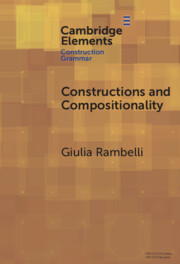Element contents
Constructions and Compositionality
Published online by Cambridge University Press: 17 December 2024
Summary
Information
- Type
- Element
- Information
- Series: Elements in Construction GrammarOnline ISBN: 9781009437929Publisher: Cambridge University PressPrint publication: 30 January 2025
